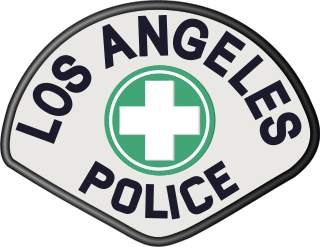
The Los Angeles Police Department (LAPD), officially known as the City of Los Angeles Police Department, is the municipal law enforcement agency of Los Angeles, California, United States. With 9,974 officers and 3,000 civilian staff, it is the third-largest municipal police department in the United States, after the New York City Police Department and the Chicago Police Department.
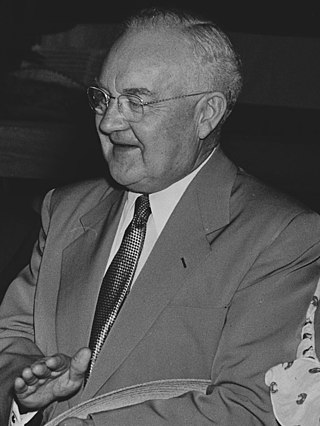
Fletcher Bowron was an American lawyer, judge, and politician. He was the 35th mayor of Los Angeles from 1938 to 1953. A member of the Republican Party, he was at the time the city's longest-serving mayor and was the city's second longest-serving mayor overall after Tom Bradley, presiding over the war boom and very heavy population growth, and building freeways to handle them.

James Edgar Davis was an American police officer who served as the chief of the Los Angeles Police Department (LAPD) from 1926 to 1929, and from 1933 to 1939. During his first term as LAPD chief, Davis emphasized firearms training. Under Davis, the LAPD developed its lasting reputation as an organization that relied on brute force to enforce public order. It also became publicly entangled in corruption. Members of the LAPD were revealed to have undertaken a campaign of brutal harassment, including the bombings of political reformers who had incurred the wrath of the department and the civic administration.

Guy Vernon Bennett was superintendent of schools in Pomona, a professor of education at the University of Southern California, and a Los Angeles city councilman from the 10th District from 1935 to 1951. He was defeated for reelection after seventeen years in office in the wake of arrest on a morals charge. He was a Democrat.
Willie L. Williams was the chief of the Los Angeles Police Department (LAPD) from 1992 to 1997, taking over after chief Daryl Gates' resignation following the 1992 Los Angeles riots. Williams was the first African-American Commissioner of the Philadelphia Police Department and the first African-American Chief of the LAPD. During his term as Chief of the LAPD, he tried to create a positive image of the department and close the rift created between the police and black neighborhoods by the violent arrest of Rodney King in 1991.
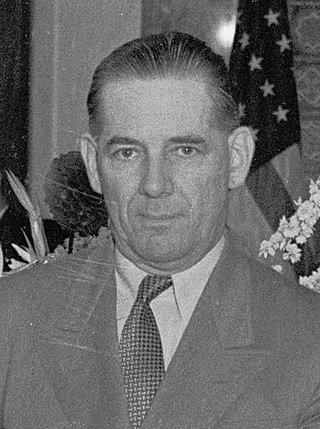
Darwin William Tate was a member of the Los Angeles City Council between 1933 and 1939 and chief of the California Division of State Beaches and Parks from 1939 to 1942.

Arthur Elbert Briggs (1881–1969) was a teacher and law school dean who was a Los Angeles, California, City Council member from 1939 to 1941 and the leader of the Ethical Society of Los Angeles in 1953.
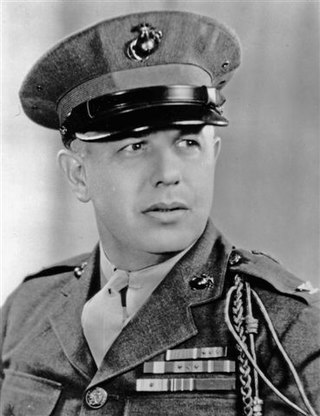
William Arthur Worton was a Marine Corps major general who served in the Pacific Theater during World War II. He was also an interim Chief of the Los Angeles Police Department from June 1949 to 1950.

Clemence Brooks Horrall was Los Angeles Police Department chief of police from June 16, 1941, when he succeeded Arthur C. Hohmann to serve as the 41st chief of the L.A.P.D., to June 28, 1949, when he resigned under pressure during a grand jury investigation of police corruption. Clemence Brooks Horrall was born in Washington, Indiana and graduated from Washington State University. Horrall had become chief when Hohmann, under pressure from Los Angeles Mayor Fletcher Bowron, voluntarily took a demotion to deputy chief after he had become ensnared in a police corruption trial that had embarrassed the mayor.
Arthur Clarence Hohmann served as Los Angeles Police Department Chief of Police from 1939 to 1941, when he voluntarily relinquished the position during a police corruption scandal. Hohmann was the 40th Chief of the L.A.P.D., succeeding acting Chief David A. Davidson in July 1939. He previously had been a lieutenant.

The Los Angeles Police Department (LAPD) was formed in 1869, and has since become the third-largest law enforcement agency in the United States. They have been involved in various events in history, such as the Black Dahlia murder, the Watts riots, the 1992 Los Angeles riots, the North Hollywood shootout, the murder trial of O. J. Simpson, and the Rampart scandal.
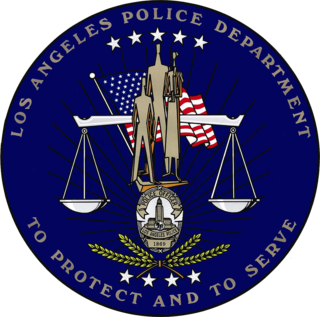
The Chief of the Los Angeles Police Department is the head and senior-most officer to serve in the Los Angeles Police Department (LAPD). The incumbent manages the day-to-day operations of the LAPD and is usually held a four star officer.
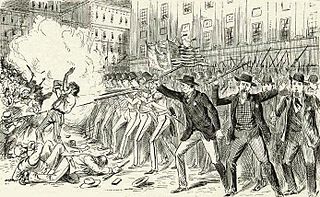
The New York City Police Department (NYPD) originates in the Government of New York City attempts to control rising crime in early to mid 19th century New York City. This increased crime was due to an increased population, caused primarily by poor Irish immigrants beginning in the 1820s. The City's reforms created a full-time professional police force modeled upon London's Metropolitan Police, itself only formed in 1829. Established in 1845, the Municipal Police replaced the inadequate night watch system which had been in place since the 17th century, when the city was founded by the Dutch as New Amsterdam.

Charles Lloyd Beck is a retired police officer, formerly serving as the Chief of the Los Angeles Police Department (LAPD) and subsequently as the Superintendent of the Chicago Police Department. A veteran of the department with over four decades as an officer, he is known for commanding and rehabilitating the Rampart Division after the Rampart scandal; and for technology enhancements during his time as Chief of Detectives. He agreed to be interim Superintendent of Police in Chicago in late 2019 while the city searches nationwide for a replacement for retiring Eddie Johnson. Beck took the helm of the Chicago Police Department on December 2, 2019 after Johnson was fired. On April 15, 2020, Beck stepped down and was replaced by former Dallas Police Department Chief David Brown, who had been nominated by Lightfoot to serve as permanent Superintendent. After his retirement he rejoined the Reserve Corps as a Reserve Police Officer and is assigned to the Office Of The Chief Of Police.
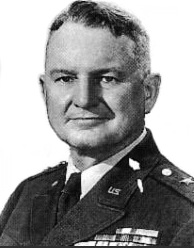
David Ayres Depue Ogden was a United States Army Lieutenant General. He was noteworthy for his command of the 3rd Engineer Special Brigade during World War II, the Ryukyus Command in the early 1950s, and his culminating assignment as the US Army's Inspector General.
Brenda Allen was a madam based in Los Angeles, California, whose arrest in 1948 triggered a scandal that led to the attempted reform of the Los Angeles Police Department (L.A.P.D.). Allen received police protection due to her relationship with Sergeant Elmer V. Jackson of the L.A.P.D.'s administrative vice squad, who reportedly was her lover.
Louis D. Oaks served as the Chief of Police of the Los Angeles Police Department from April 22, 1922 to August 1, 1923. He succeeded James W. Everington and was succeeded by ex-Berkeley, California Police Chief August Vollmer, a prominent criminologist.
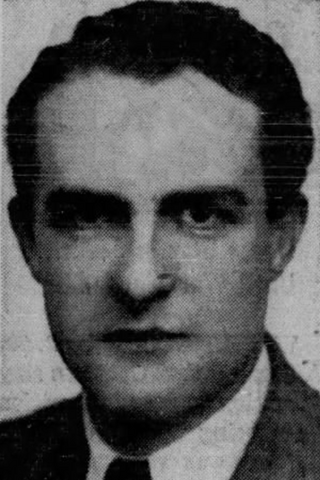
Roy Hampton was an attorney, ex-Marine and former journalist who was a member of the Los Angeles, California, City Council from 1939 to 1943. Sheriff's deputies said he committed suicide in a Malibu motel in 1953.

The integration of women into law enforcement positions can be considered a large social change. A century ago, there were few jobs open to women in law enforcement. A small number of women worked as correctional officers, and their assignments were usually limited to peripheral tasks. Women traditionally worked in juvenile facilities, handled crimes involving female offenders, or performed clerical tasks. In these early days, women were not considered as capable as men in law enforcement. Recently, many options have opened up, creating new possible careers.
















